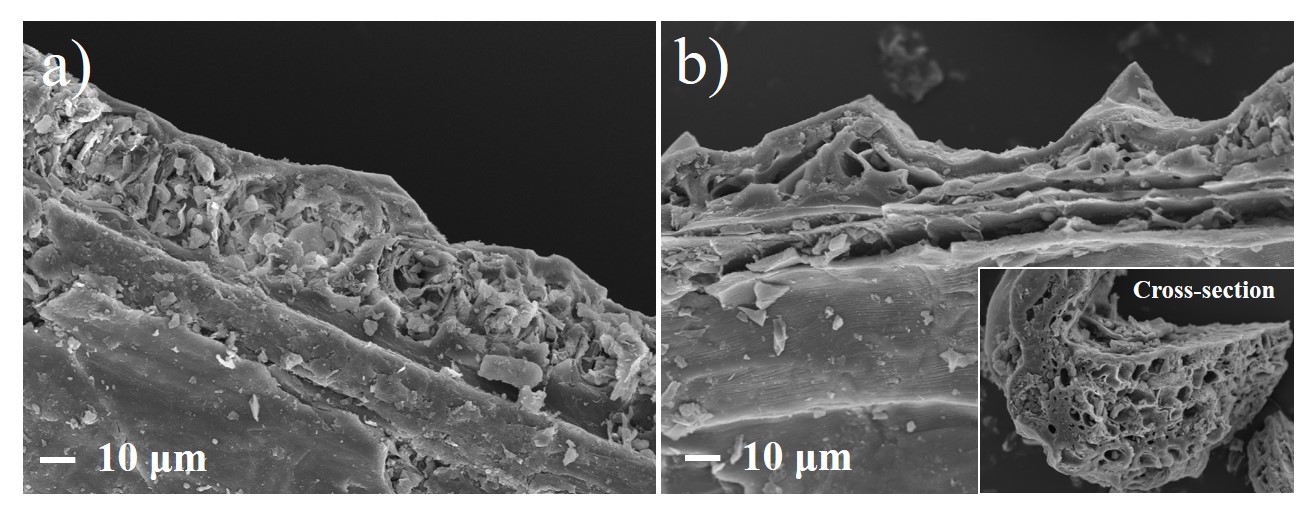Removal of Methylene Blue Using Agricultural Waste: A Case Study of Rice Husk and Rice Husk Ash from Chaipattana Rice Mill Demonstration Center
Main Article Content
Abstract
Rice husk (RH) and rice husk ash (RHA) from Chipattana rice mill were studied in order to investigate the physical properties and methylene blue (MB) dye adsorption potential of RH compared with RHA residuals after gasification process. The structural observation using SEM expressed the enhancement of RHA porosity after underwent gasification process, in which coincided with the BET analysis. The BET specific surface area exhibited RH and RHA were 2.56 and 149.66 m2/g. The average pore diameter of RH was 3-fold greater than that of RHA which are 7.0 and 2.7 nm. However, the RH performed as a better adsorbent for MB dye removal with the efficiency at equilibrium 98.95%, while RHA was 92.70%. The study of concentration effect presented the adsorbed amount MB increased with the increase of MB initial concentration. The kinetic studies agreed with pseudo-second-order, while, the sorption process of RH corresponded to chemisorption process, but, RHA rather depended on the physico-chemical mechanism. From isotherm study, RH and RHA adsorbents were well-fitted to Langmuir model; however, the sorption process of RH could possibly be influenced by an intraparticle diffusion mechanism. The results revealed a good potential to utilize RH and RHA residuals from Chaipattana Rice Mill Demonstration Center for dye removal without further modification process.
Article Details
Published articles are under the copyright of the Environment and Natural Resources Journal effective when the article is accepted for publication thus granting Environment and Natural Resources Journal all rights for the work so that both parties may be protected from the consequences of unauthorized use. Partially or totally publication of an article elsewhere is possible only after the consent from the editors.
